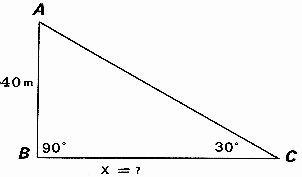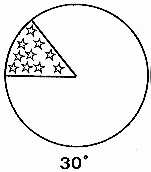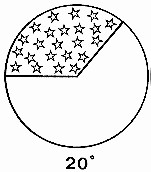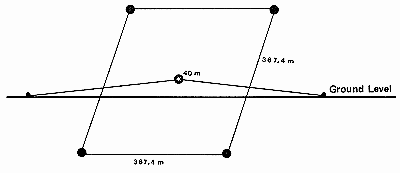Auschwitz Notebook
Certain Impossibilities of the "Gerstein Statement"
Throughout all these years, the Exterminationists have continued to peddle the claim that there was a definite attempt by National Socialist Germany to exterminate all Jews and so they proffer the “Gerstein Statement” in support of their theory which popularly has been dubbed the “Holocaust.” The “Gerstein Statement” was supposedly written by Kurt Gerstein, a person who was not in the least inhibited from making pretentious claims about himself and his technical know-how.
The Statement asserts that Gerstein had passed a “certified engineer's examination” in 1931 and a “mining surveyor's examination” in 1935. Gerstein's “twin studies” were “technology and medicine” and with these proficiencies backing him up, it was not difficult for him, “with the help of two references written by… two Gestapo employees who had dealt with … [his] case… to enter the Waffen SS.” Due to his “successes” he was “declared sincere and indispensable” (109:251-2; compare 142:253).
However, we are not impressed, for if we examine Gerstein's technical skill, judging it by the “Gerstein Statement,” we wonder whether he would have passed an examination in elementary mathematics!
Let us here examine one example of Gerstein's mathematical proficiency. According to the “Gerstein Statement,” Gerstein is supposed to have seen, while on a brief visit to Treblinka, 8 gas chambers and “whole mountains of clothes and underwear about 35-40 meters high” (109:254). Observe here, that he did not see one such high mountain of clothes, but “mountains” – just how many he does not state. We will now examine this matter about the 35-40 meters high clothes mountains more closely, basing our figures on a height of 40 meters (131.2 ft).
If we assume each storey of a house is 2.66m we gather some vision of how high 40 meters really is. That would mean that the heap of clothes would be as high as a 15-storey building (40/2.66 = 15.04).
It should be apparent that no human being, even if he happens to be an Exterminationist, can throw clothes that high up, so that leads us to the question of how the clothes got to the top. We shall not examine here how such mountains of clothes could have got to Treblinka in the first place.
There is no record that the clothes were brought 40 meters up by means of high cranes; were thrown from airplanes; brought to the top by means of balloons, then parachuted; or blown up by huge, powerful blowers. We must not forget that the Exterminationists keep reminding us that the Germans were highly technically skilled and they used their know-how in executing the Extermination Program. Judging from pictures from other places of the collecting of clothes and articles (10:205, page unnumbered; 23:64 opp.; 25:3640; 29:53)[1] we can only assume they were brought to the top by human hands. The only way we can see they were brought to the top was by people climbing up the huge mountains of clothes.
Let us now out of curiosity find out about the area that ONE such mountain of clothes may have taken at Treblinka. We know the height of the mountain of clothes: some 40 meters. Assuming the heap of clothes to be a right triangle (90°) what would the angle have been at the base? We feel that if we were to allow 30° at the base this would be too steep of a climb, and from what the Exterminationists claim – that the victims at Treblinka were half dead even before their arrival at the camp – a 30° angle seems out of the question. For even a person in good condition, a climb of 40 meters, with a 30° angle, would be quite a task and many a person would faint before even getting half way to the top. For the sake of the argument let us however start off with an angle of 30° and find out what measurements we would get.
First we must find out the measurement of the base in FIG.1 which we have represented with X.

(Figure 1)
Our object is now to find out the “tangent” or “tan” of the angle which we have assumed to be 30°.
SOLUTION:
| tan 30° | = .577 |
| then X | = 40/.577 |
| 40 | = 69.32 |
The measurement of X=69.32m is only the radius. The diameter or total length would be 138.64 (2 ×69.32). If we take the mountain of clothes to be a square we get:
138.64 × 138.64 = 19,221m2
A mountain of clothes that size would thus take up an area of 19,221 square meters or almost 2 hectares.
Let us suppose that the clothes would be spread around at the base in a circle. Then the area of the circle at the base whose radius is 69.32m would be:
| area Pi × r² | = 3.1416 × 69.32² |
| = 4805 m² |
However, not only would it be difficult to climb up a mountain of clothes 40m high having an angle of 30°, but it would also be quite windy at the top and the wind would spread the clothes around. Besides, we wonder how such a mountain could be climbed in winter time. Gerstein claims it was “winter” while he was at Treblinka.[2] It is indeed a wonder that no Exterminationist has come up with the suggestion the slope was used for skiing down by the Germans, or to push victims down to their death, thus sparing them the gassing procedure. Think of all the Zyklon B they would have saved!
A 30° climb would be far too steep even under normal conditions. Let us therefore find out what the area in square meters would be if the angles were 20° or 10°.
SOLUTION:
| tan 20° | = .364 |
| then X | = 40/.364 |
| X | = 109.89 m |
| area 109.89 × 2 | = 219.78 m |
| 219.78 × 219.78 | = 4,8303 m² |
The total area of such a mountain of clothes would be almost 5 hectares. Our next task is to find out the area of a 10°:
SOLUTION:
| tan 10° | = .176 |
| then X | = 40/.176 |
| X | = 227.27 m |
| area 227.27 ×2 | = 454.54 m |
| 454.54 × 454.54 | = 20,6607 m² |
This mountain of clothes would have taken over 20 hectares. Now, where was this immense mountain of clothes located at Treblinka and what about the rest of the 40 m high mountains? What about the shoes? What about the belongings the prisoners took with them? What about the suitcases, examples of which are displayed at Auschwitz? If there were several mountains of clothes as high as 40 meters at Treblinka, how many other mountains of other articles would have been there?[2]
Although the Exterminationists orgy in throwing the “Gerstein Statement” into the faces of their opponents and doubters, they never want, for obvious reasons, to go into the details about their cherished proof, which makes one wonder just how much trust they really put on their most valuable “evidence.”
The interesting part comes, however, when we try to investigate how large the Treblinka camp was – that is, if there was a camp at the place. The very existence of a concentration camp at Treblinka hinges on mere hearsay and flimsy evidence. It is highly doubtful if there ever was a concentration camp at Treblinka. There are no reliable records available which show this, and even Exterminationists themselves inform us that the whereabouts of the camp could not be determined after the Soviets took over the place.
As years have passed, the Exterminationists have rigged up[3] various locations purporting to be the location of the camps. In an endeavor to uphold the Extermination theory they have apparently divided Treblinka into two camps, one for labor, the other for extermination. These places are then called Treblinka 1 and Treblinka 2. There is no agreement on which place is which and it all seems to hinge on who asks the question.
The place furthest away from the railroad tracks (one source claims it is located about 1.5 km away, see 1, vol. 15:1366), by some indicated as Treblinka 2, can be dismissed, that is, if any credence can be placed on the present site. Today the place has the foundation of what purports to be 8 barracks besides two other foundations, one of which was fairly well built and which has a basement. It is not certain however whether the foundations of the 8 barracks were built by the Germans or not. They may just as well, as in the case of Chelmno, have been put there by the “liberators” after the war.
It is apparent, however, that if there was a camp there, not even one such clothes mountain could have been accommodated at the place. The area is far too small and the presence of the 8 barracks and the other buildings exclude such a huge mountain. Besides, the site of the so-called “gas chambers” which were located near the mountains of clothes is supposed to have been near the railroad tracks, about 1.5 km away.
It must be admitted, however, that this place which is located nearer the railroad tracks looks even more suspicious than the former. From evidence we could gather at the location, there was no proof of such a place at this location.[4]
One (of several) official figures the Exterminationists have given us of the total area for the “death camp” is 13.5 hectares, or 135,000 square meters (33.4 acres). If the camp was in a square the measurements would thus have been 367.4 m × 367.4 m ( sqr(135,000) = 367.4 – see FIG. 3). It may be readily seen that the camp could hardly have contained even one such mountain of clothes even if we were to allow an angle of 30°. This camp is also supposed to have contained numerous buildings. A model of it is presented in Encyclopaedia Judaica (Vol. 15:1368) which is likely based on conjecture. It does illustrate the point, however, that the camp had numerous buildings. The mere presence of such a high mountain of clothes would have made it most difficult for the guards to keep an eye on the prisoners, besides, it would necessitate that a fence be built that was even higher than the mountain of clothes, for had the mountain of clothes been close to the fence (in the case of 10° angle it would of course go beyond it), the prisoners could have readily escaped over the fence unless it was higher than the clothes mountain. An angle of 10° would require that the fence surrounding the Treblinka camp would be over 34.3 meters. The whole notion of such a high fence is staggering, to say the least (see FIG. 3). To get the correct measurement of the entire fence, the length of the fence going above the base where the mountain of clothes is meeting, should be added to 34.3 m.


The below circle graphs can be used to illustrate the total area which one such mountain of clothes would have taken of a camp having 13.5 hectares. An angle of 30° would require 14.2% of the circle.
If we take the 10° angle, the area for such a mountain of clothes would have extended the mountain beyond the camp, some 53 % or 194.7 meters and require a fence over 34.3 meters. The following graph will illustrate this point nicely if we assume the camp to be in the shape of a square.

FIG. 5 is based on a measurement that the Treblinka “death camp” had an area of 13.5 hectares (367.4 × 367.4). With an angle of 10° the mountain of clothes would reach 53% beyond the area of the camp. The fence surrounding the camp would have to be over 34.3 meters.
Similar experiments with measurements can be made on the others camps where the sizes of the camps have been given. Admittedly these figures are for the most times taken out of a clear blue sky, such as in the cases of Treblinka and Sobibor, but the Exterminationists inform us that the methods of procedure and the killing of the victims resembled each other at such places as Chelmno, Belzec, Sobibor and Treblinka.
It is claimed that Sobibor “had an area of 60 hectares” (12:84; 774.6 × 774.6 m², or 148.3 acres). This measurement, given to us by the Polish authorities, is a mystery of its own for when we investigated the area in 1978 we could not even determine if there was a camp there and what is shown to us today is a place having an area even less than that of Treblinka. Many of the trees at Sobibor were clearly older than the camp and while we were there they were cutting down the wood all around the place. Quite possibly the area which was cleared had been cleared of trees after the liberation, a method which has been used at such places as Chelmno.[5] The unsuspecting tourist learns nothing about this unless he is determined to make a thorough investigation of his own. As far as we know there never was an extermination or prison camp of any sort at Sobibor and what was there was likely nothing more than a small German military post. There is no evidence whatsoever of an extermination camp at Sobibor and a figure of about 100 x 100 meters should be more than adequate for the present site in making the experiment. Even if the clothes mountain had an angle of 30° it would have reached beyond the “camp.”
The Exterminationist Leon Poliakov reports from the Jerusalem Tribunal in 1961 that the method of extermination at Belzec, as reported by Gerstein, “very much resembled the one at Treblinka” (142:411). We are told this also was true in the case of Sobibor, a place Gerstein had not “visited” nor did he “exactly” know where it was located, but which, according to him, had a daily death toll of 20,000 persons, some 5000 less per day than at Treblinka. (109:252; 142:412).
Two Polish “authorities” maintain a death rate for Sobibor which almost equals the alleged figure for Treblinka, some 600,000 (7:248; 12:84). As we are on a guessing journey we may as well speculate that Sobibor also had mountains of clothes. Gerstein had been instructed that one of his duties was to “disinfect a very large quantity of clothing” (142:412).
At Belzec the victims were instructed to “Take all clothing off” (142:414). Likely also here there were mountains of clothes. One Polish authority tells us that this camp “occupied a relatively small area rectangular in shape with sides measuring 275 and 263 metres respectively” (12:81; 7.2 hectares or 17.8 acres). Anyone who has visited Belzec and examined it, recognizes at once how ridiculously small the “death camp” really is and it is a wonder why the Exterminationists would bring this place up in evidence as one of the most elaborate places for extermination ever invented by man.
At the time the Germans were running Belzec the area inside was “camouflaged with branches and young trees,” and at the center there was “a clump of trees” (12:81). When we examined the place in 1978, about half of it was forested. It would be interesting to know where even one mountain of clothes could be put in this camp.
In none of these alleged camps do mountains of clothes, 40 m high, fit in.
And here are some further observations. If we were to allow one set of underwear to each person, a liberal estimate counted on the basis of a 30° angle would be that one mountain of clothes 40m high would contain the underwear of at least 190 million people! The counting of one set of underwear per person cannot be considered to be too little as Exterminationists sometimes tell us the victims were put naked onto the trains, and if so, then the victims did not have any clothing with them on their arrival at the camps (compare 161:299; RH 17).
It should be evident from the above examples that no person with a sound mind can put any credence to such arrant nonsense as the Exterminationists are repeatedly dishing out to an uncritical public. The Extermination Theory should be placed where it really belongs: in the realms of fantasy. Viewed in this light the whole Theory will unfold as a fiction; a mental derangement foisted upon man on a mass scale in this era of “technology and enlightenment.”
Footnotes
| [1] | It should be recognized that none of the pictures presented in these sources have any resemblance to such a high mountain of clothes. Some of the pictures are purported to have been taken at Auschwitz-Birkenau. But if the mountains of clothes at Treblinka, a camp which the Exterminationists consider to be a small camp, were 40m high, how high must not the mountains of clothes have been at Auschwitz and Birkenau? |
| [2] | Apparently Gerstein was so confused that he did not know that August was not “in winter.” |
| [3] | A good example of a camp being rigged is Stutthof. In a major Polish Exterminationist authority, published in 1962, it states: “Owing to the fact that Stutthof had no gas chamber installations they [the victims] were generally liquidated by bringing them in the shortest possible time to a 'natural' death.” See 12:70. Today at Stutthof, however, they do show a gas chamber to the visitors. By comparing various photographs of this building it is apparent the building has been altered. Likely the “gas chamber” was rigged up in order to attract tourists. Concentration Camp tourism is now a valuable source of foreign exchange for Poland. There is now a Holiday Inn at Auschwitz, besides numerous smaller hotels and youth hostels. |
| [4] | The area has obviously been cleared of trees. The ones still standing at or near the “Extermination” place are much older than the camp. We are also told the extermination camp was located beside the railroad track. This is not so, at least not today. The best we can say of this place is that the whole area looks suspicious. |
| [5] | When we were at Chelmno in 1978 we talked to one of the men who had helped in cutting down the trees after the liberation. When we asked him if this cutting down of trees was not a deliberate attempt to fool the people, seeing books tell us this was an extermination camp, the man smiled, and said: “You know – in books everything can be written!” According to his wife, the only thing which was there at the time of the Soviets taking over the place were two barracks. The place was then cleared of trees by the “liberators,” foundations were set, all built to give a semblance of a former camp. |
Bibliography
1. Encyclopedia judaica, Keter (Jerusalem), 1971/2.
7. Scenes of Fighting & Martyrdom Guide, Sports & Tourism Publications (Warsaw), 1968.
10. Oswiecim (Auschwitz), Michalak, Interpress (Warsaw), 1977.
12. Genocide 1939-1945, Datnet et al., Wydawnictwo Zachodnie (Warsaw), 1962.
23. From the History of KZ-Auschwitz, Smolem, Auschwitz
25. Auschwitz 1940-1945, Smolem, Auschwitz Museum, 1976.
29. Ausgewählte Probleme aus der Geschichte des KL Auschwitz, Smolem, Auschwitz Museum, 1978.
109. The Hoax of the Twentieth Century, Butz, IHR, 1976.
142. Debunking the Genocide Myth, Rassinier, IHR, 1978.
The complete Bible Researcher bibliography contains nearly 200 Exterminationist and Revisionist references, and is available from the author.
Bibliographic information about this document: The Journal of Historical Review, vol. 1, no. 1 (spring 1980), pp. 69-80
Other contributors to this document: n/a
Editor’s comments: n/a
